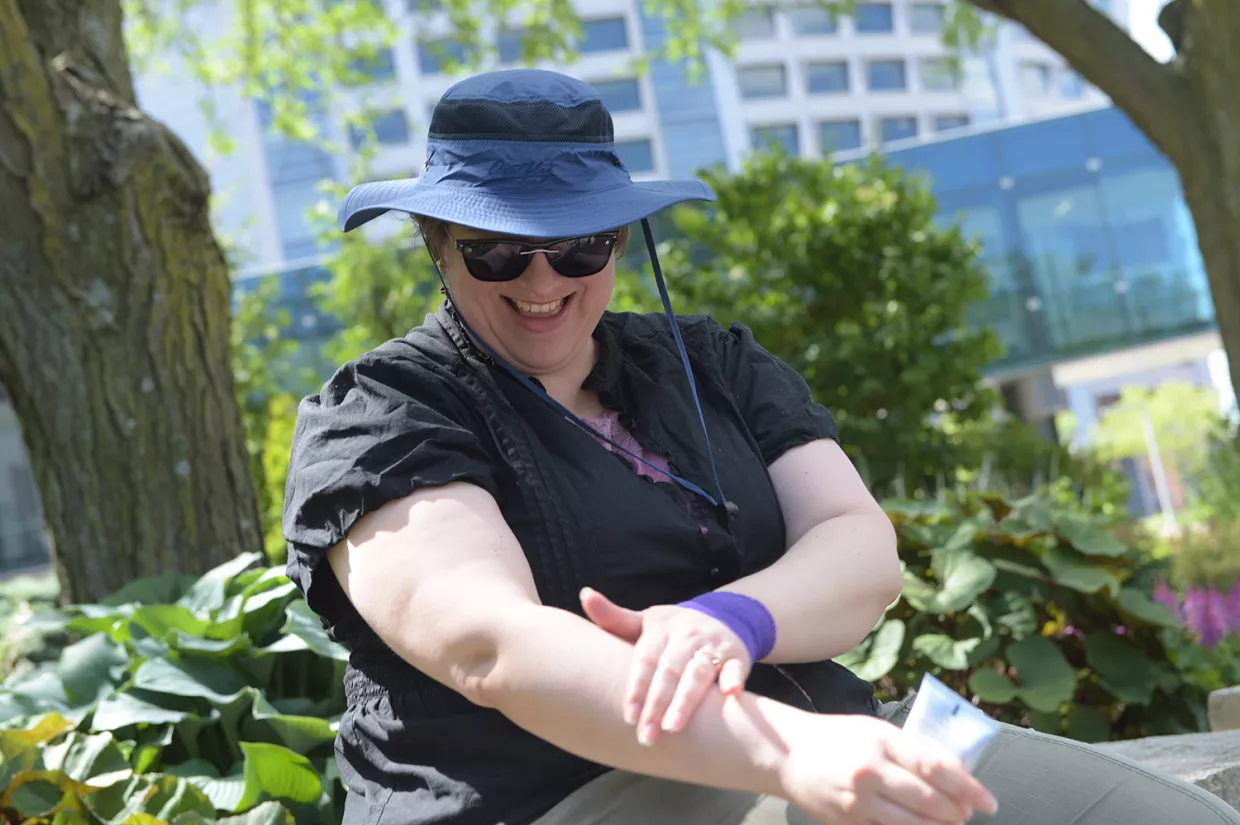Clinical trials of new cancer treatments give Laura a chance to benefit from the latest medicine available

Tomorrow’s best treatment, today
When Laura Simonis talks about her melanoma, drug names like “pembrolizumab” and “indoximod” roll off her tongue with ease. That’s because she did her research and decided that a clinical trial would be part of her plan to fight cancer.
“I was eager to be in a clinical trial,” says Laura, of Des Moines, Iowa. “I wanted the best care I could get, from an expert in the field.”
With help from her oncologist in Des Moines, she chose Holden Comprehensive Cancer Center at the University of Iowa, where Mo Milhem, MBBS, is director of the melanoma program. Milhem is an enthusiastic proponent of clinical trials.
A clinical trial is a research study that tests a promising new treatment not yet on the market. In Laura’s case, she received a combination of pembrolizumab and indoximod to treat Stage 4 melanoma in a lymph node in her hip.
Pembrolizumab is what Milhem calls the “standard of care” for melanoma. That means it’s the best care available right now. It’s an immunotherapy drug that has shown a 40 percent five-year survival rate. Before pembrolizumab was released in 2011, survival rates for melanoma stood around 5 percent.
The clinical trial adds indoximod to that standard treatment. Early results from the trial indicated that 59 percent of patients had their tumors shrink or disappear when treated with the combination of pembrolizumab and indoximod. However, researchers need to study the drug combination’s side effects and outcomes before it can receive Food and Drug Administration approval for widespread use.
When the U.S. Cancer Moonshot—a national initiative to accelerate cancer research over the next five years—was launched in 2016, Vice President Joe Biden noted that fewer than 5 percent of cancer patients participated in clinical trials.
Milhem says people like Laura are responding to the call.
“With education and public awareness, people now understand that clinical trials are cutting-edge medicine,” Milhem says. “If they want the next best drug that’s out there, it’s in a clinical trial.”
Laura has had very positive results. She lives a normal life, enjoys traveling with her husband, eats what she wants, and feels few side effects.
“I’m very grateful that it’s working so well, that it’s doing what it’s supposed to be doing, and that I’m perfectly normal,” she says.
Laura has no second thoughts about trying a new drug—not just because it helped her, but because she knows it benefits all melanoma patients.
“Science can help us in so many ways that we haven’t figured out yet,” she says. “If you can help to figure that stuff out, that is an amazing legacy.”